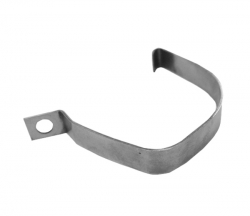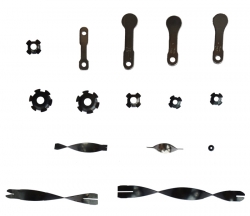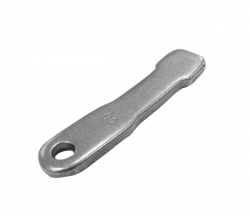Relationship between bending gap and material
Date:2014-03-22 Author: Click:
The design of the mold gap is related to those factors. The first one is the material, the second is the thickness, and the other is the requirements for the hardness of the material after heat treatment.
In metal materials, atoms act with considerable force, enough to resist the effects of gravity, so in the absence of other external forces, metal objects will maintain their own shape and size.
Elastic deformation-When an object is subjected to external forces, its shape and size will change, that is, deformation. The essence of deformation is that the distance between atoms changes. If the external force acting on the object is removed, the deformation caused by the external force disappears, and the object can completely restore its original shape and size. Such deformation is called elastic deformation.
Plastic deformation-If the external force acting on the object is removed, the object can not completely restore its original shape and size. Such deformation is called plastic deformation. Both plastic deformation and elastic deformation are performed under the condition that the deformation does not break(ie, continuity does not break)
The plastic deformation ability of the material is usually expressed by plasticity.
Plasticity-refers to the ability of a solid material to undergo permanent deformation under external force without destroying its integrity. The plasticity of a metal is not fixed, and there are many factors that affect it. In addition to the intrinsic factors such as the lattice type, chemical composition, and metallographic structure of the metal itself, Its external factors-deformation mode(mechanical factors namely stress state and strain state), deformation conditions(physical factors namely deformation temperature and deformation speed) also have a great influence.
(1) Impact of gap on cross-sectional quality
When the gap is reasonable, the cracks generated at the upper and lower edges will coincide with each other during the punching process. Although the section of the parts that are rushed out at this time has a certain slope, it is relatively straight, clean, and the burrs are small, and the punching force is also small.
(2) Effect of gap on dimensional accuracy
The deviation between the precision stamping parts and the mold size is mainly due to the deformation of the plate during the stamping process, the elastic deformation of the fiber elongation and the dome bending, and the disappearance of the parts when they leave the mold. The deviation value may be positive. It may also be negative. The main factor affecting this deviation is the mold gap. The material nature, shape, and size of the parts also have a certain influence on this.
(3) Effect of gap hedging
With the decrease of die clearance, the punch force increases. This is because the gap is small, the bending moment M decreases the tensile stress of the material, and the compressive stress increases. When the gap is increased, the punch force decreases, but the gap value continues to increase. Because the cracks generated from the convex and concave die edges do not coincide, the punch force decreases and slows down.
(4) Effect of gap on die life
The life of the punching die is usually expressed by the number of strokes to ensure that the qualified product is obtained. The damage to the mold during the punching process is blunt, and the blade and concave blade are cracked.
Increasing the gap can reduce the punching force, so the wear of the mold also decreases, but the gap is too large. Due to the increase in bending moment and tensile stress, the edge of the mold is damaged. When the gap is generally 10 % -15 % of the thickness of the material, the wear is minimal., The die life is relatively high. When the interstitial hour drop parts are stuck in the die hole, it may cause mold cracking.
From the above phenomena, it can be seen that the phenomenon is still very obvious, so as long as the thickness and strength of the material are combined, the best punching gap can be determined to obtain the experience value. Now this experience value has been summed up very well, but for some new materials, If you are not sure, You can also summarize it yourself. Generally speaking:
In fact, there is no specific calculation formula for the value of the gap(only some simple empirical formulas, although there are theoretical calculation formulas but it is not suitable for practical application. The reasonable gap value is related to the thickness of the material, the material, and the accuracy or other requirements of the parts(such as the die life, the size of the parts, the structure of the section, and the quality). It is usually determined by the mold manual.
Tags:Hardware.
Browse:
Products:
News:
- CCTV Network: China Enterprise Innovation Forum 2013 Annual Conference, Jin Rui Hardware Company Chenzonghuo "2013 China Enterprise Innovation Outstanding Person"
- October 2015 Chinas hardware industry exports and growth rate drop
- What are the classification and purchasing skills of hardware products
- In the first three quarters of 2015, Chinas exports of hardware products to emerging markets and some countries along the Belt and Road grew well
- What parts does a lighter have?
- China Hardware Products Association 2016 Working Conference in Beijing
- How does hardware stamping parts small and medium-sized processing enterprise survive?
- Knowledge and terminology required for hardware stamping
- The Chinese Hardware Industry has entered a fanatical era
- Chinese hardware global attention

 Telephone number:0769-88325500
Telephone number:0769-88325500 



















